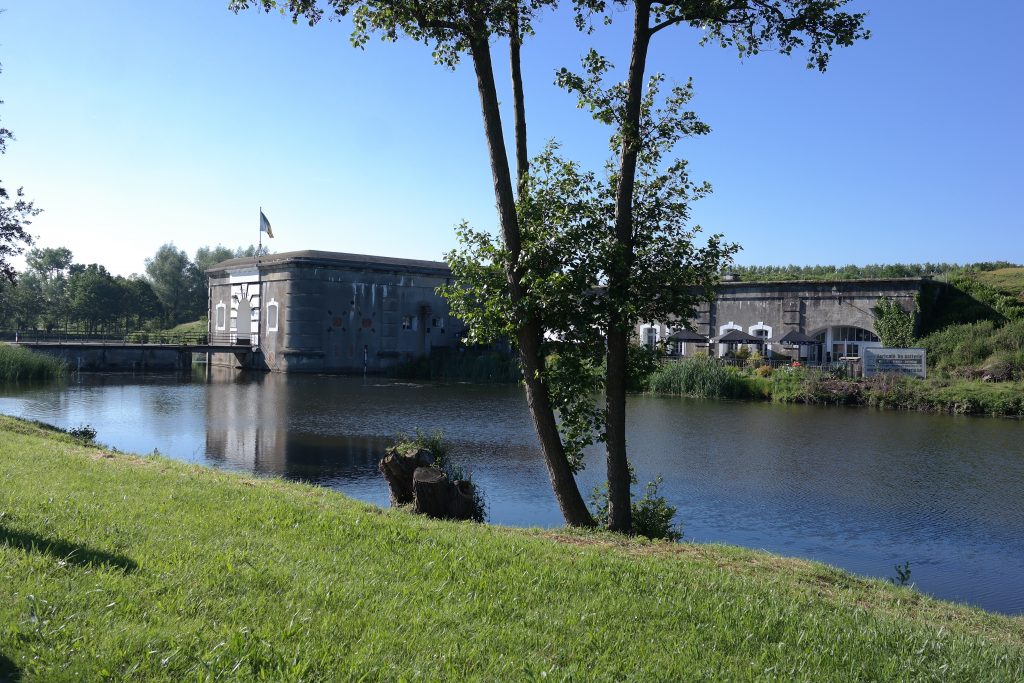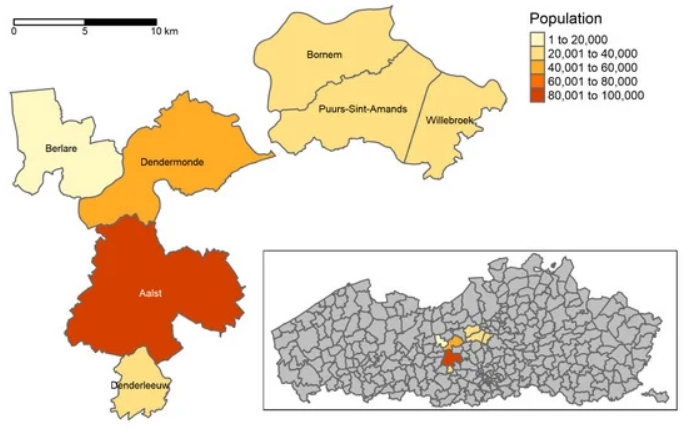Scheldeland field trip by consortium team

On 7 June 2021, the project team of Toerisme Vlaanderen and KU Leuven undertook a day visit to the municipalities of Puurs-Sint-Amands, Bornem, and Dendermonde, the central locations of the Scheldeland Living Lab. During this trip, the project team familiarized themselves with the local situation and cultural resources and met with policy makers, entrepreneurs and heritage experts.
In the morning, the Fortress of Liesele was explored, pre-WWI fortress built as part of a defensive ring of fortresses around Antwerp. Twice occupied without any direct battle, the fortress has been well preserved and is now being redesigned as multi-recreational attraction with a museum, escape rooms, B&B bedrooms, meeting locations, and a surrounding nature area.
Next, the team visited the historic centre of Puurs-Sint-Amands, at the banks of the Scheldt river, before moving on to Bornem with its impressive heritage sites of the Sint-Bernardus Abbey – currently undergoing intensive renovations to reimagine the site as a multi-purpose venue catering to both local residents, businesses, and cultural tourists – the castle of Marnix De Sainte-Aldegonde and the castle d’Ursel.
In the afternoon, the city of Dendermonde was explored, with visits to the Town Hall and Belfry, the beguinage, and the Honky Tonk Jazz Club, which has welcomed legends such as Fats Domino, Chuck Berry, Jerry Lee Lewis, BB King and Ray Charles in its 55-year-old history. Dendermonde is also the city of the legend of the horse Bayard, with the impressive processional of giants taking place every ten years and being central to the identity of the city. The day ended at the shipping wharves of Baasrode, industrial heritage from the end of the 19th century.




